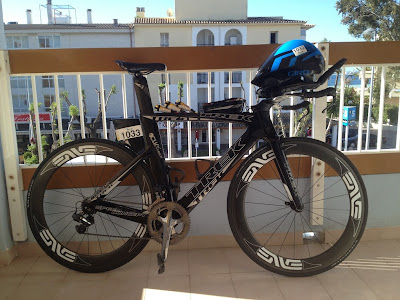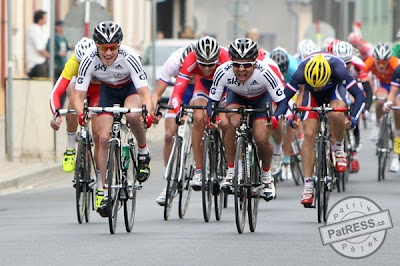On the
Easter Saturday I was lucky to take part in a free triathlon training
session provided by Tri Together
(http://www.lcdisability.org/tritogether). This was an amazing
opportunity.
As
everybody was just starting I was overwhelmed by the information
available, but the thing that made me the most nervous was – HOW TO
PUT IT ALL TOGETHER?! Slowly learning swimming, running and improving
my bike, that was all clear. Just go and do. But the transition form
one to another was a big mystery.
The session
benefited me in three ways – swim coaching and feedback, transition
coaching, race rules.
The swim
session was amazing! We spent about an hour in the pool. I had a lane
to myself and did all the splashing I could! My biggest success of
the day was learning how to do the tumble turn (still need a lot of
practice). It took me few attempts and they had some funny outcomes.
For one I ended up still facing the wall after all the tumbling I'd
done. I know I will not use it in my life much, but it was fun to
learn. I learned few drills and got some good tips on the ones I was
doing already. Learned that in my last length in the pool I should
really kick my legs as much as possible. That would help me when I
get out and go to my first transition. It makes blood circulate more
and therefore the dizziness will not so bad after the swim. I really
like the fact somebody actually looked at the way I swim. I think
everybody should get a swim buddy or join a swimming group. After
learning all this and practicing for a while, I am now able to do 100
meters in just over 2 minutes that is getting close to a half of what
I did when I just started.
Transition
coaching was fun! It started to rain and snow and we were standing
there in our socks and short sleeve tops listening to instructions. I
now know how to set up my transition. I would have never thought of
putting a towel down on the ground to wipe my feet after the swim. We
were told some funny stories about people pinning their race numbers
on their tops while not wearing them. Outcome – back and front of
the shirt pinned together! I have now bought a race belt to avoid
this mistake.
Everybody
can practice in the way we did it because it was easy and simple and
you should be able to find enough space in your local park or even
front of your house. Find a place to rack or just put down your bike.
Next to it lay out all you need – towel, top with number or race
belt, shoes, socks, helmet etc. Put some cones or other marks out
further away – one to mark the “out of transition” one to mark
“in the transition”. Pretend you run out of swim, run to your
bike, put on helmet etc. Take your bike, run to “out of transition”
then cycle for few meters to “in the transition”. Get off, rack
the bike, change shoes and repeat the circle with running. This will
get your familiar with the process so no stress on the day.
Lastly, but
very important, is rules! We did not go through all of them, but I
now know important things. No nudity! Mainly applies to guys, as they
are not so shy about taking their tops off, but there should be no
unnecessary flesh showing. So no changing your clothes at every
point. Tri suit is a good option, as you can leave it on for the all
three parts of the event and wear it under wetsuit too. Then – do
not touch your bike before your helmet is buckled up and do not take
your helmet off before your bike is back on the rack! And no rude
language towards anyone, especially referees! There are other rules,
but I remember those most of all.
Just the
last tip – you might be in hurry and forget to take your helmet
off. But think twice, do you really need it for the run!












.jpg)















